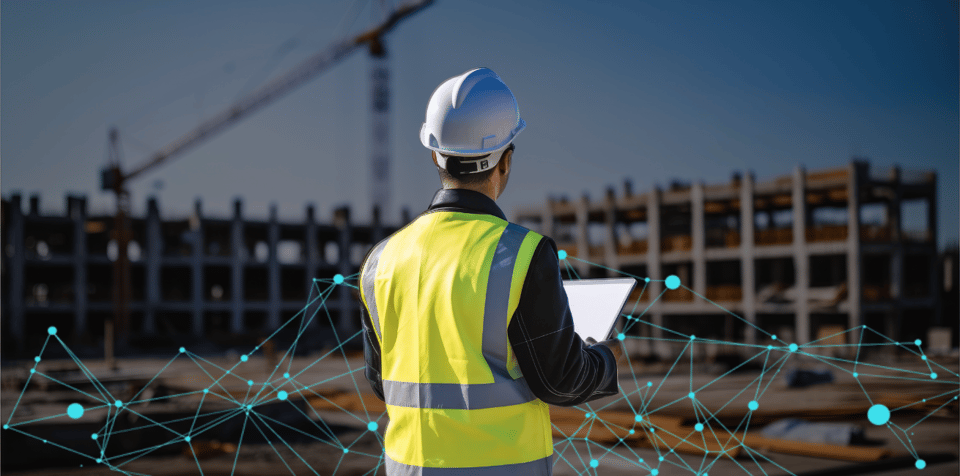Looking to complete projects on time, on schedule, and with improved quality?
Integrated digital delivery (IDD) leverages advanced digital technologies to optimize construction and infrastructure projects across the architecture, engineering, and construction (AEC) industries.
By integrating cutting-edge digital technologies into the AEC process, practitioners overcome challenges such as inconsistent information flows between the office and the field, nonconforming digital models, and project complexity giving way to scope creep.
Key digital technologies driving these improvements include building information modeling (BIM), machine learning solutions, augmented and virtual reality (AR/VR), laser scanning, robotics, 3D printing, prefabrication and Design for Manufacturing and Assembly (DfMA) systems, analytics software, blockchain, digital twins, and internet of things (IoT).
These advancements are revolutionizing built asset lifecycle management from individual projects to organizational and industry-wide operations. And they have the potential to create a seamless experience for stakeholders within the project ecosystem. By bringing together people, workflows, and technology in each relevant use case, the result is improved communication and more efficient workflows throughout the life of the project.
Integrated digital delivery in the construction lifecycle
Far from being just another industry trend, IDD is crucial to the entire construction lifecycle, enhancing key aspects such as:
DESIGN
Data-driven design and real-time stakeholder collaboration improve project plans, ensuring that they’re optimized, accurate, and aligned with client needs.
FABRICATION
Leveraging DfMA for efficient, consistent off-site building component production improves the integration of the supply chain into the construction process. This reduces waste and maintains alignment with project specifications.
ASSET DELIVERY AND MANAGEMENT
Real-time monitoring and smart maintenance protocols enhance on-site productivity and increase asset value post-construction.
CONSTRUCTION
Just-in-time delivery, installation, and on-site monitoring maximize productivity and minimize rework.
Four benefits of integrated digital delivery
The future of construction is digital. By embracing IDD—which brings together digital technologies like BIM with work processes—companies can enhance their operations.
Seamlessly combine digital technologies with construction workflows to take advantage of collaborative ecosystems, data integration, sustainable construction, and cost savings and improved efficiency:
COLLABORATIVE ECOSYSTEMS
Banish silos from workflows and foster teamwork instead. Integrated digital delivery provides a competitive edge by enabling unparalleled operational excellence and promoting collaboration among all stakeholders—including architects, engineers, contractors, and owners. It creates a digital ecosystem where information is shared seamlessly, improving communication and collaboration.
Using a common data environment (CDE) it’s possible to work cross-functionally by exchanging data between disciplines, and by leveraging data across lifecycle stages. The ability to align vital project information such as milestones, schedules, materials, and construction methodologies reduces bottlenecks and enhances responsiveness.
DATA INTEGRATION
Data integration enables cross-disciplinary collaboration by combining multiple data sources such as design tools, construction documents, and others into one unified platform. Together with a federated digital model, this assists with:
- Model checking to align the digital representation and real-world architectural, structural and functional attributes
- GIS visualization bringing geospatial and building information together for applications including urban planning and infrastructure
- Algorithmic checks that address architectural design and construction of spaces, efficient resource utilization and disposal, compliance with building and regulatory codes, as well as constraints related to traffic control, fire safety, emergency access, and asset information requirements.
As a result, you can get ahead of issues before they escalate, reduce project downtime, and alleviate delays and commercial, legal, and financial risks by staying on top of quality and compliance concerns. This enables better project monitoring and governance, alignment of milestones with business objectives, and validation of strategic planning through data-driven insights and analytics.
SUSTAINABLE CONSTRUCTION
IDD optimizes resources through accurate material ordering and enhances energy efficiency while reducing the carbon footprint through intelligent design. This approach makes it easier to select sustainable materials and integrate renewable energy sources from the earliest design stages on your way toward compliance with stringent environmental standards such as LEED, Green Mark, and others.
COST SAVINGS AND IMPROVED EFFICIENCY
Achieve productivity gains across projects. IDD supports technologies and workflows that enable comprehensive, real-time insights into progress, costs, and quality to help teams make adjustments throughout the project and asset life cycle. The powerful combination of a unified digital collaboration platform and digital models ensures that plans match the build—facilitating resource management and identifying issues that would otherwise impact costs and timelines.
The American Society of Civil Engineers cites a recent benefit-cost analysis, further validating the benefits of model-based delivery. The biggest advantage? Projects that used BIM and IDD saved about 15 percent in change orders.
Bring integrated digital delivery to your workflow
Streamline your processes while meeting industry standards like ISO 19650, and ensure that every stage is optimized for efficiency and quality—from the inception of a design to the delivery of a sustainable asset. Integrated digital delivery has the power to elevate your operation, fostering collaboration from beginning to end and creating efficiencies that improve costs and end results.
Curious about what IDD looks like in practice? See how LeapThought deployed FULCRUMHQ as the CDE and collaboration plaform for the Land Transport Authority to enhance productivity and ensure compliance. Explore the case study now and get in touch to discuss your needs.







